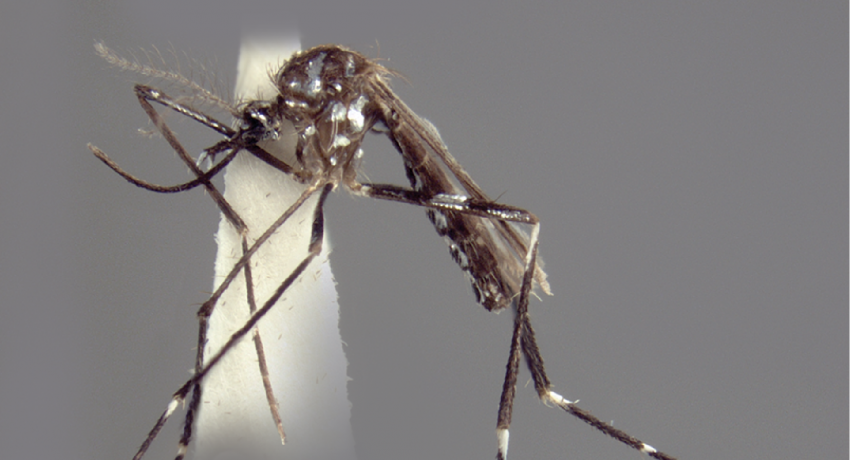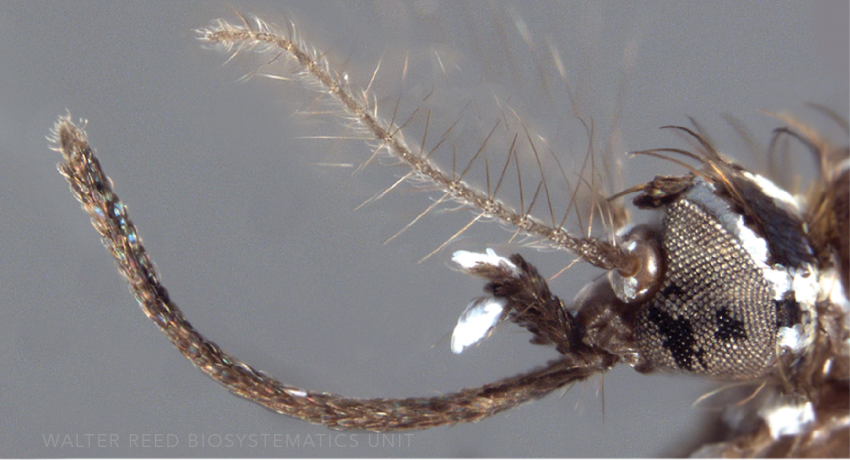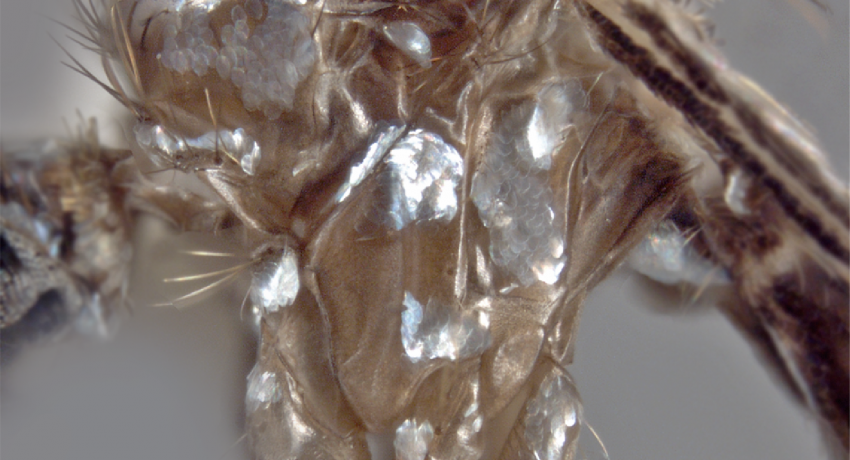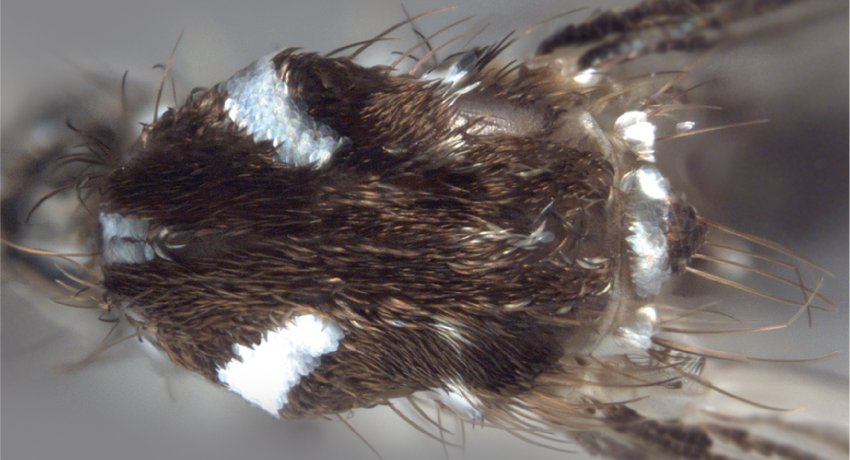AFROTROPICAL REGION
Etymology: Africa
The highly ornate species Ae. africanus is one of the most important yellow fever vectors in Africa. Originally described from Nigeria, it is widely distributed throughout sub-Saharan Africa, except Madagascar. It is the nominotypical member of the Africanus Group, which comprises eight species, seven of which are anthropophilic, including the biomedically important Ae. luteocephalus (Newstead), with which it is often confused.
Type locality: Duke Town & Bonny [Eastern Provinces], Nigeria
Type depository: Natural History Museum, London, England, United Kingdom (NHMUK)
DIAGNOSTIC CHARACTERS (Click photos to view; mouse over and click large photo to zoom in.)
ADULT (illustrated): Head: Proboscis entirely dark-scaled; palpus with apical white scales; pedicel with lateral white scales; vertex with small number of erect forked scales; narrow decumbent scales absent from occiput and vertex; patch of broad white supraalar scales present. Thorax: Anterior promontory with median stripe of broad white scales; scutal fossa and lateral lobes of scutellum with broad white scales; paratergite with broad white scales; postspiracular scales absent; subspiracular and postpronotal scales broad, white. Legs: Fe-II with three large, white patches on anterior surface. Ti-III with a white stripe on ventral surface in basal 0.2-0.3; Ta-III1–4 with basal white band; Ta-III4 with basal 0.20-0.33 white; Ta-III5 all dark.
LARVA (not illustrated): Head: Antenna mostly smooth, not spiculate; seta 1-A very small; seta 4-C well-developed, branched; setae 5–7-C usually single; setae 5-C, 7-C inserted approximately at same level. Terminal segments: Comb with spatulate comb scales, in a single row; siphon short, index about 2.0; pecten spines c. 6 x as long as wide, with well-developed denticle, sometimes with 1 or 2 smaller basal denticles; no precratal setae; four pairs of seta 4-X.
TAXONOMIC KEYS
Huang 2004
![]()
WRBU – Aedes – Afrotropical Region – Larva
Exemplar DNA sequences
Ae. africanus COI: GQ165782, MG242464
BIONOMICS
Immatures
Females usually oviposit their desiccation-resistant eggs in plant-based containers close to the ground, but immatures are also found in bamboo stumps, cut bamboo, tree holes, branch forks, rock holes, as well as artificial containers. These can include discarded metal cans and tires, and they have also been found inside homes. Eggs undergo installment hatching, even when flooding of the oviposition sites occurs.
Adults
Aedes africanus are associated with arboreal environs, from sea level to altitudes of at least 1800m. Host-seeking occurs at both ground and canopy level, with peak biting activity at dawn and dusk. Aedes africanus primarily feed on primates, but readily bite humans outdoors, and even enter houses to feed. They serve as effective vectors of zoonotic pathogens between non-human primates and man, and are an important part of the yellow fever cycle. Females are present year-round in some of its range.
DISTRIBUTION NOTES
Angola, Benin, Burkina Faso, Cameroon, Central African Republic, Congo, Côte d'Ivoire, Democratic Republic of the Congo, Equatorial Guinea, Ethiopia, Gabon, Ghana, Guinea, Kenya, Liberia, Mali, Mozambique, Nigeria, São Tomé & Príncipe, Senegal, Sierra Leone, Sudan & South Sudan, The Gambia, Uganda, Zambia.
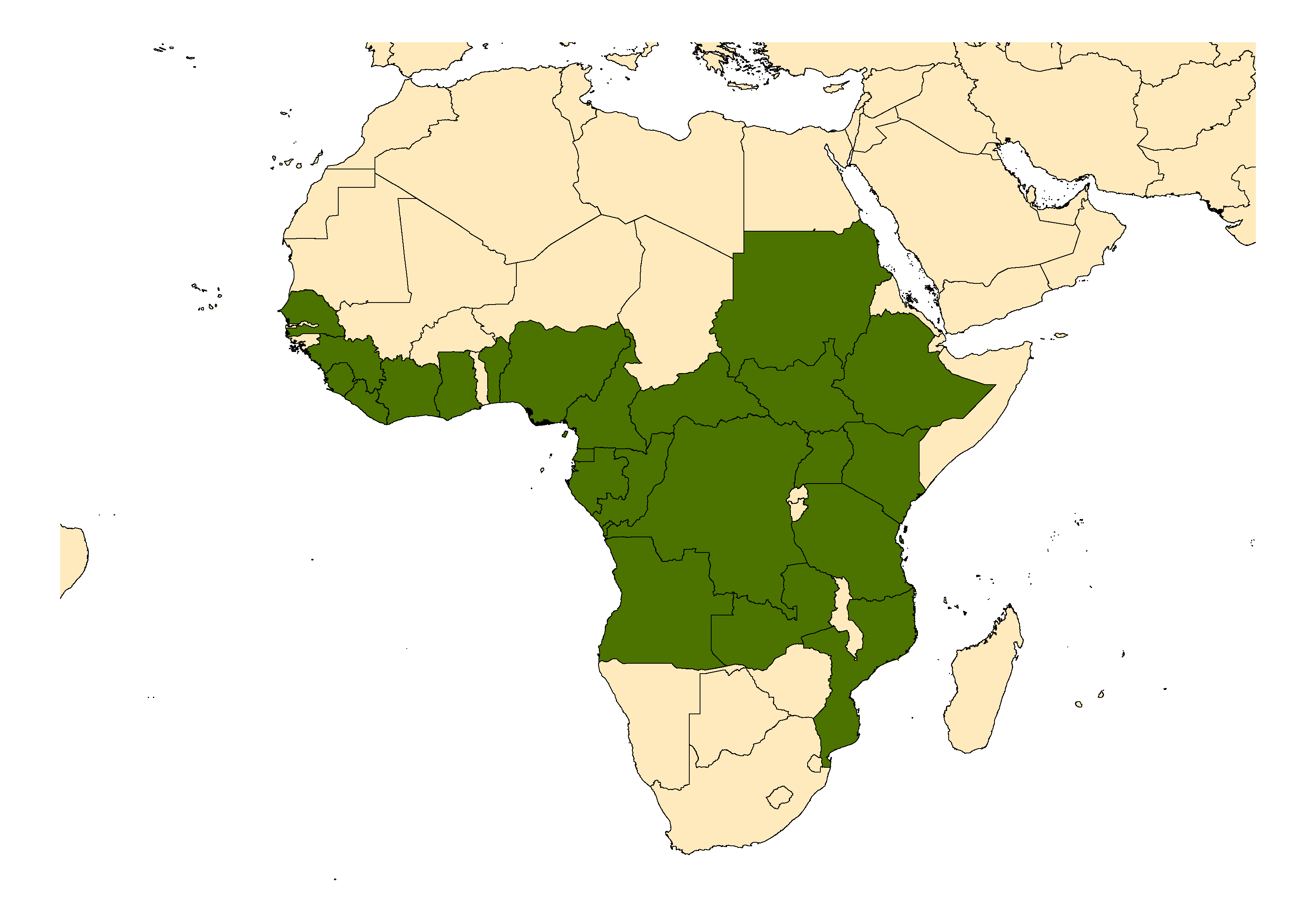
WRBU VECTOR HAZARD REPORTS
None; View other WRBU Vector Hazard Reports
Available GIS Models
IMPORTANT REFERENCES (full citations below)
Theobald 1901d: 3 (F; Stegomyia)
Edwards 1941: 150 (M*, F*), 391 (P*)
Hopkins 1952: 156 (L*)
Mattingly 1952: 241 (taxonomy)
Mattingly & Bruce-Chwatt 1954: 187 (M*, F*)
Mohrig 1967 (F*)
Service 1976a (distribution; Gabon)
Huang 1990: 14 (M*, F*, P*, L*; lectotype designation; distribution)
Linley et al. 1993c (E*)
Reinert 2000e: Fig. 35 (F*)
Toto et al. 2003: 344 (distribution; Equatorial Guinea)
Huang 2004: (M*, F*; taxonomy, adult key, distribution)
Rueda 2004 (F*, L*; keys for African dengue vectors)
CURRENT SYNONYMS
syn. dubia Theobald
1910c: 170 (F*; Stegomyia). Type locality: Katemar, Bihe, Angola (NHMUK).
CITED REFERENCES
Edwards, F.W. (1941). Mosquitoes of the Ethiopian Region. III. Culicine adults and pupae. Bulletin of the British Museum (Natural History) Entomology.
Hopkins, G.H.E. (1952). Mosquitoes of the Ethiopian region. I. Larval bionomics of mosquitoes and taxonomy of culicine larvae (2nd ed.). London, UK: British Museum (Natural History).
Huang, Y.-M. (1990). The subgenus Stegomyia of Aedes in the Afrotropical Region I. The Africanus group of species (Diptera: Culicidae). Contributions of the American Entomological Institute, 26(1), 1–90.
Huang, Y.-M. (2004). The subgenus Stegomyia of Aedes in the Afrotropical Region with keys to the species (Diptera: Culicidae). Zootaxa, 700, 1–120.
Linley, J.R., Abo-Ghalia, A.H., Soliman, B.A., & Mukwaya, L.G. (1993c). The eggs of Aedes caspius and Aedes africanus (Diptera: Culicidae). Mosquito Systematics, 25, 25–34.
Mattingly, P.F. (1952). The subgenus Stegomyia (Diptera: Culicidae) in the Ethiopian region I. A preliminary study of the distribution of species occurring in the West African sub-region with notes on taxonomy and bionomics. Bulletin of the British Museum (Natural History) (B), 2, 233–304.
Mattingly, P.F., & Bruce-Chwatt, L. J. (1954). Morphology and bionomics of Aedes (Stegomyia) pseudoafricanus Chwatt (Diptera, Culicidae), with some notes on the distribution of the subgenus Stegomyia in Africa. Annals of Tropical Medicine and Parasitology, 48, 183–193.
Reinert, J.F. (2000e). Comparative anatomy of the female genitalia of genera and subgenera in tribe Aedini (Diptera: Culicidae). Part V. Genus Aedes Meigen. Contributions of the American Entomological Institute, 32(3), 1–102.
Rueda, L.M. (2004). Pictorial keys for the identification of mosquitoes (Diptera: Culicidae) associated with dengue virus transmission. Zootaxa, 589, 1–60.
Service, M.W. (1976a). Contribution to the knowledge of the mosquitoes (Diptera, Culicidae) of Gabon. Cahier ORSTOM. Série Entomologie Médicale et Parasitologie, 14(3), 259–263.
Theobald, F.V. (1901d). Notes on a collection of mosquitoes from West Africa, and descriptions of new species. Liverpool School of Tropical Medicine Memoir, 4.
Theobald, F.V. (1910c). A monograph of the Culicidae of the World (Vol. V). London.
Toto, J.C., Abaga, S., Carnevale, P., & Simard, F. (2003). First report of the oriental mosquito Aedes albopictus on the west African island of Bioko, Equatorial Guinea. Medical and Veterinary Entomology, 17(3), 343–346.
CITE THIS PAGE
Walter Reed Biosystematics Unit (Year). Aedes africanus species page. Walter Reed Biosystematics Unit Website, http://wrbu.si.edu/vectorspecies/mosquitoes/africanus, accessed on [date (e.g. 03 February 2020) when you last viewed the site].

